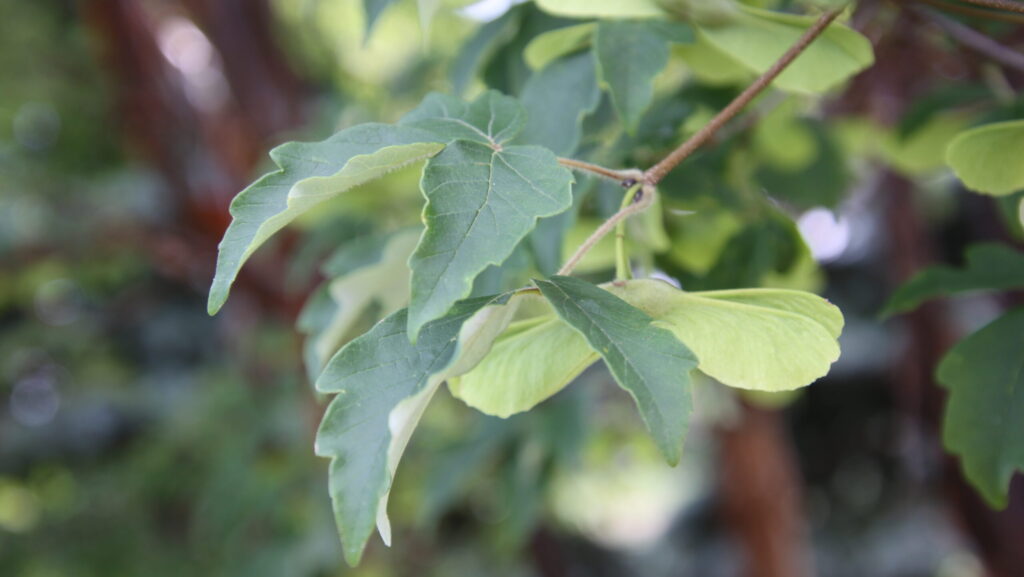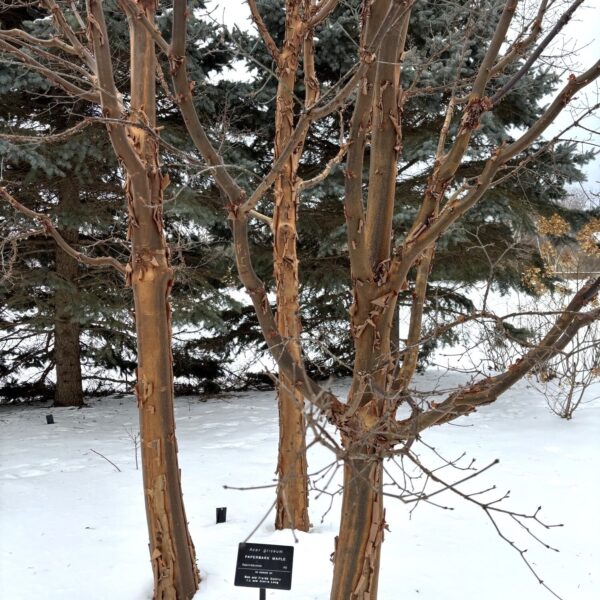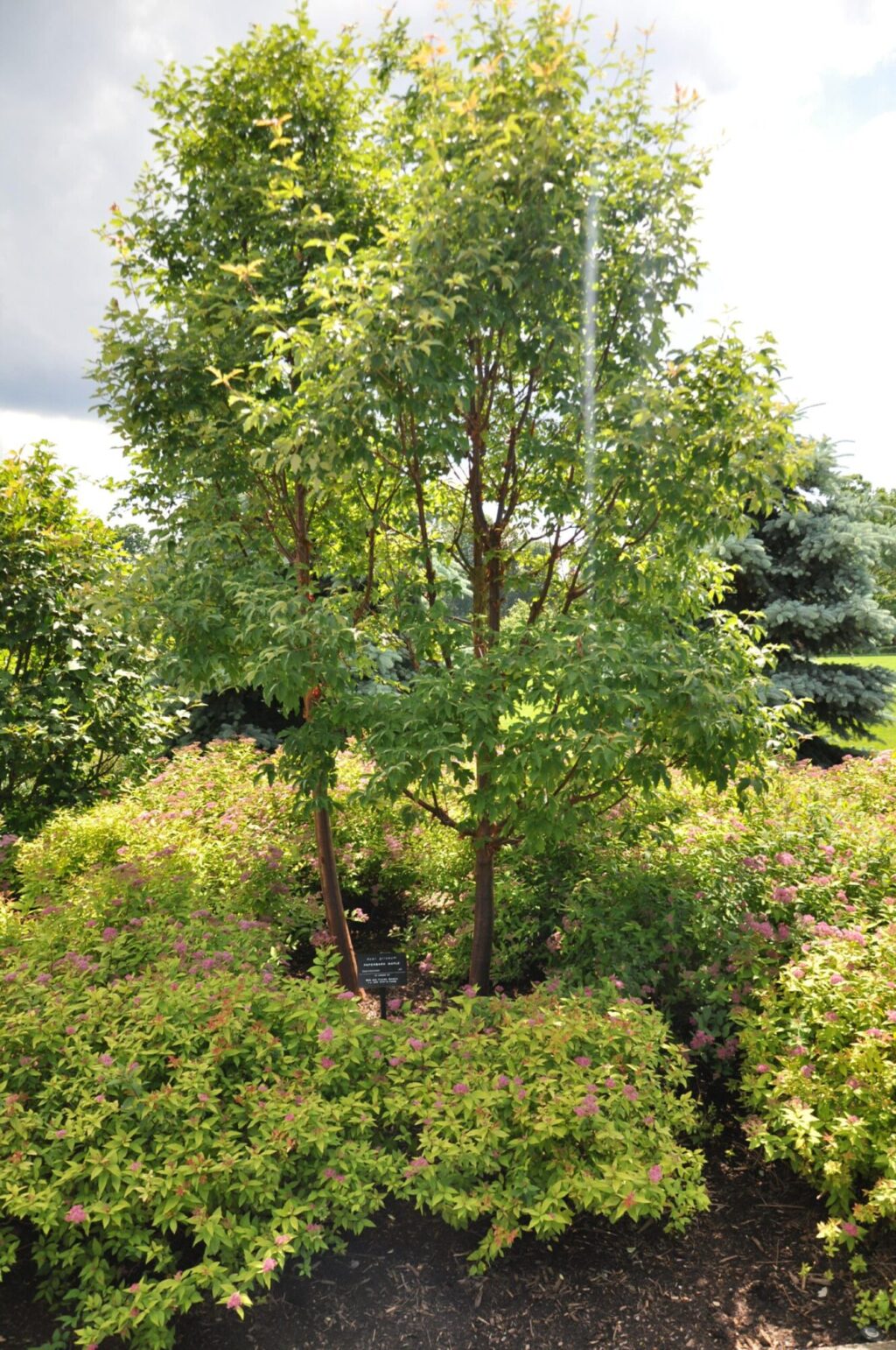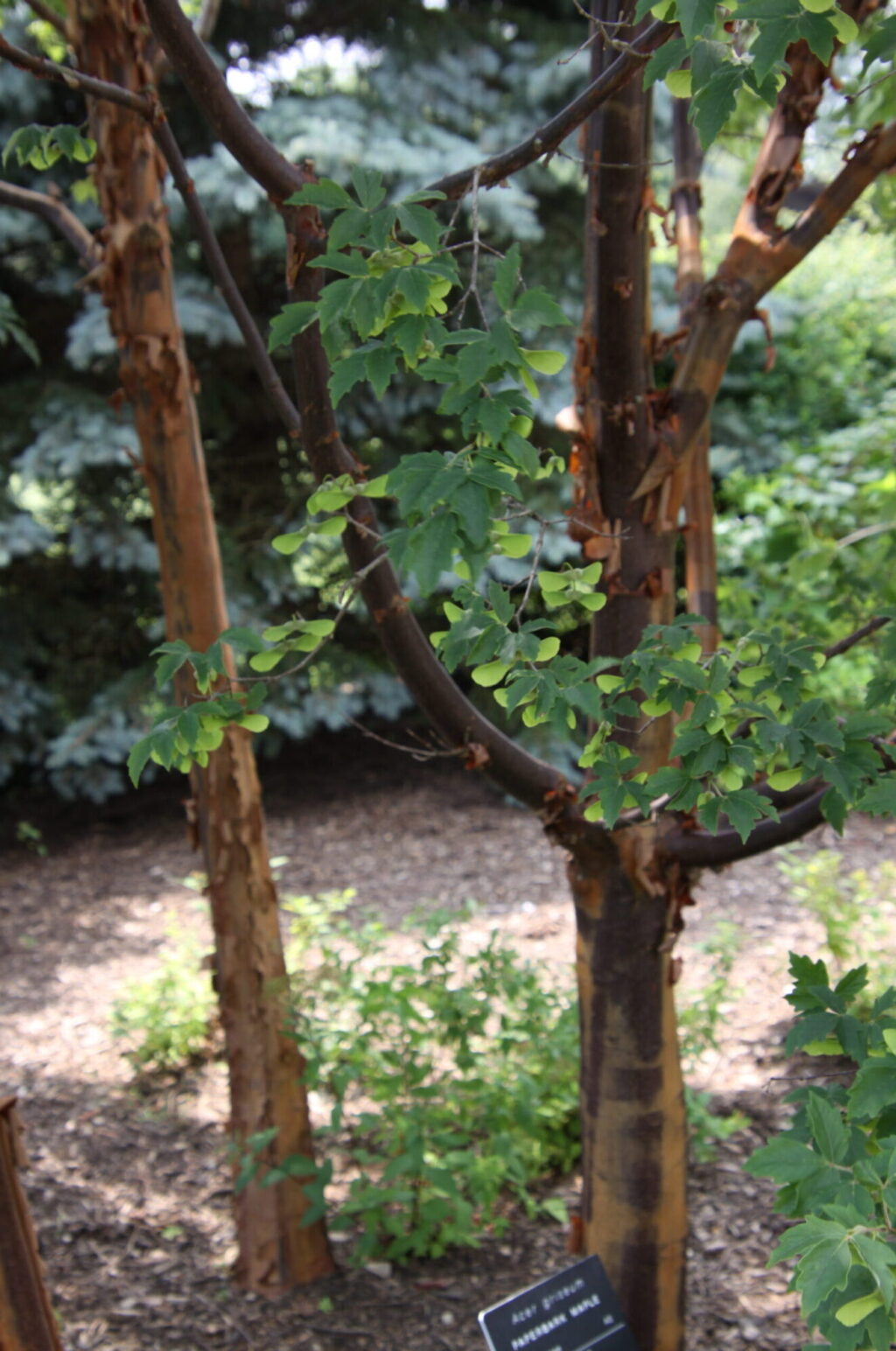
It’s winter, but that doesn’t mean that the Arboretum isn’t worth a visit! There are plenty of coniferous trees, persistent fruits, and seed heads providing texture, color, and sensory experiences to the gardens. Evergreen shrubs, perennials, and deciduous trees with unique features are also on display, providing endless winter interest.
One such specimen is the paperbark maple (Acer griseum), providing contrast to the landscape with its striking, exfoliating, cinnamon-orange-brown bark, often against a snowy backdrop. This small deciduous tree, native to Central China, grows up to 30’ tall on average and is of notable ornamental value. The paper-like peeling bark stays on the tree throughout the season, covering its trunk and upright branching limbs.
Foliage appears during spring and often persists into winter, composed of 3-5’’ long soft-green trifoliate leaves (meaning three leaves or leaflike parts) with gray-blue-green undersides. In fact, the specific epithet, griseus, translates to gray, referring to the silvery leaves beneath. Fall color is variable and often develops later than other maple species but can range from bronze-green to showy oranges and reds. In spring, small and insignificant greenish-yellow flowers eventually develop into fruit in the form of double-winged samaras with large seeds, which are scattered by the wind in the fall.

A. griseum is an excellent choice if you’re looking for smaller ornamental tree for your landscape that provides all-season interest. This specimen has also become a popular bonsai subject, especially in Europe, due to its ornate characteristics and compact and slow-growing nature.
You can find our paperbark maples alongside our Event Lawn area (across from our Strolling Gardens), situated right in front of one of our popular Colorado blue spruce varieties (Picea pungens ‘Mission Blue’), which also adds a pop of color to the landscape during the winter season!






